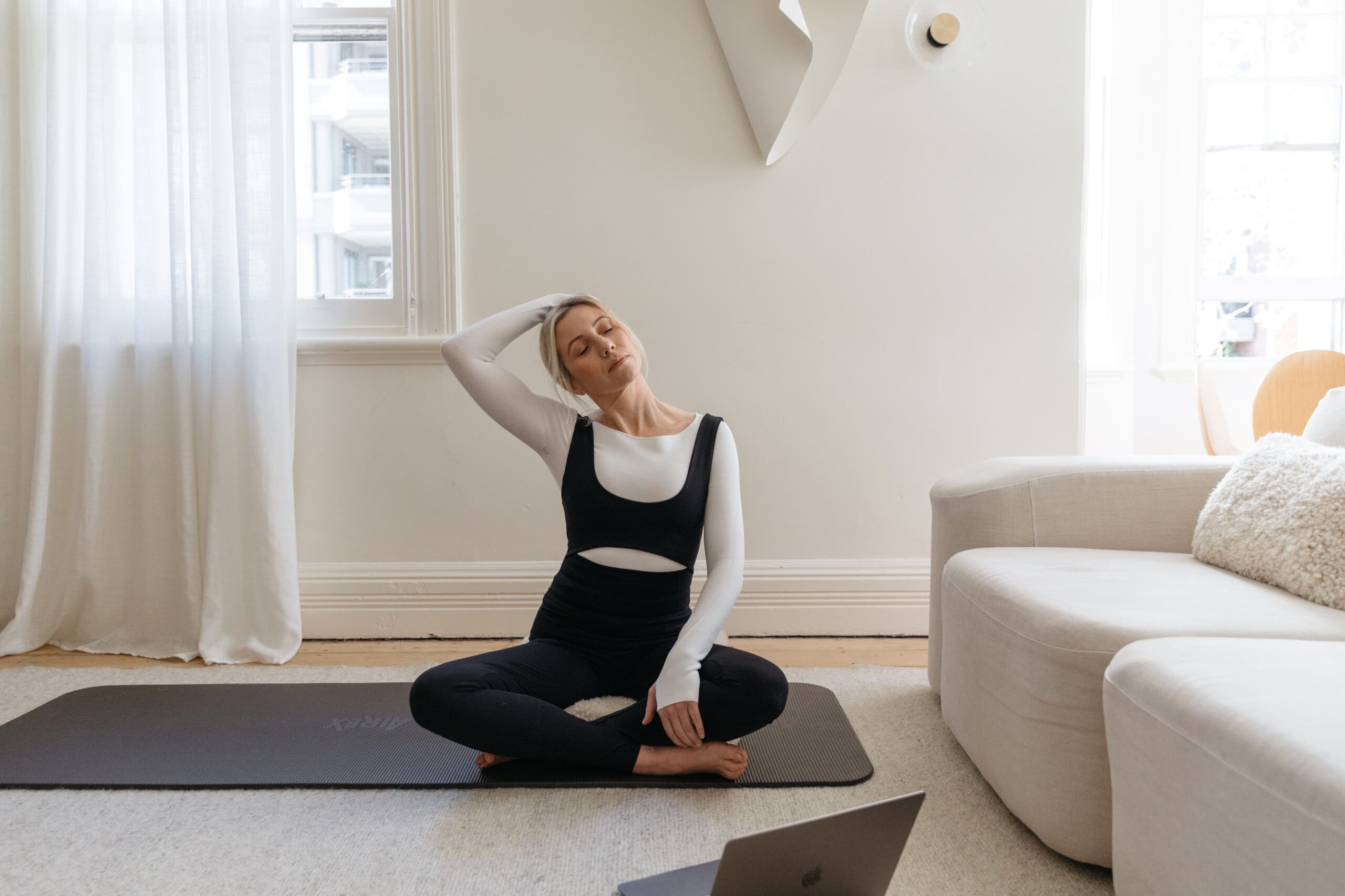NECK AND UPPER BACK PAIN
Working from home?
Whether you are working from home or not, the past 18 months has brought unconventional and interrupted working conditions for many people. This has been challenging in varying capacities, but one commonality I see day-to-day in the studio is pain – specifically around our neck, shoulders, and upper back.
Working from home or alternative working conditions quite often removes our ergonomic desk set-up. You’ve swapped your desktop screen for your laptop and office chair for your dining table, lounge (or bed). None of which are ideal scenarios for your neck and upper back. Here is why…
In Pilates we refer to plumbline when assessing your posture. This is where, when standing side on, your ear is in line with your shoulder, hip, knee, and ankle bone. If you were to draw a straight line through each of these points, you would be in what we call a ‘neutral’ position.
There are around 20 muscles that work to hold your head in place and help to move it around. Your head is held by the seven cervical vertebrae of your neck, and your neck weighs approximately 5kg (on average) when your posture is plumbline – standing upright, looking forward in a neutral neck and spine position. A small shift, or tilt of the head (just 45 degrees) can increase the weight of our head to 22kg. As you’re reading this, think about the position of your head.
More often than we realise we are tilting our heads forward to look at our laptops or phones, increasing the sheer force on the base of our neck and upper back to the equivalent of holding a 22kg weight on our spine. Overtime, this added pressure not only causes short-term neck and upper back pain, but ultimately affects our long-term posture and alignment. We start to develop this hunched, slumped, stiff and sore feeling through the upper back (thoracic) and neck. Neck and upper back pain are things we commonly see in the studio; however, it is even more apparent now with more people working from home and not having the correct setup to work.
Pilates can help!
This behavioural neck and back pain can be fixed with Pilates! Firstly, let’s assess what is causing this pain. As I mentioned earlier, the sheer force on the neck and upper back from poor posture is the culprit. The upper back muscles are in a long-lengthened position, shortening and tightening the muscles through the front of the chest. Holding this slumped position for extended periods weakens the upper back, causing stiffness and chronic pain.
So how do we fix it?
One of the easiest ways to alleviate the pressure through your neck and upper back is to stand up tall to encourage the spine to fall back into its neutral position. Try this really easy stretch that I like to do when I’m boiling the kettle for my morning coffee:
- Find an empty piece of wall
- Lean up against the wall with your feet slightly out and your knees gently bent
- You want to have the back of your head, shoulders and bottom all touching the wall
- Roll your shoulders back, let your arms hang long and have your palms facing forward
- Make sure your chin is tucked in (think 10 chins) and that you haven’t tipped your head back to get to the wall – this may be challenging for some of you, so do the best you can. The more you do this the easier it will get
- Hold for a few minutes – everyday!
Improving your posture and creating an upright, taller feeling comes from regularly stretching in conjunction with strengthening.
Stretching will open up the front of the chest and mobilise the thoracic spine.
Best stretching workouts for this:
Strengthening will help hold the shoulders back and down.
Best upper body workouts for this:
Important tips:
- Lift your mobile, laptop or device to eye level or to the point where you’re not tilting your head forward to look down – remember 22kgs!
- Stand up and move every 30 minutes.
- Sit up straight in a chair and try not to slump. Imagine someone is pulling you up through the crown of your head, your spine feels long and lifted.
- Prioritise strengthening your upper back.
- And stretch! Every day. To open up the chest and build extension through the upper back / thoracic.





